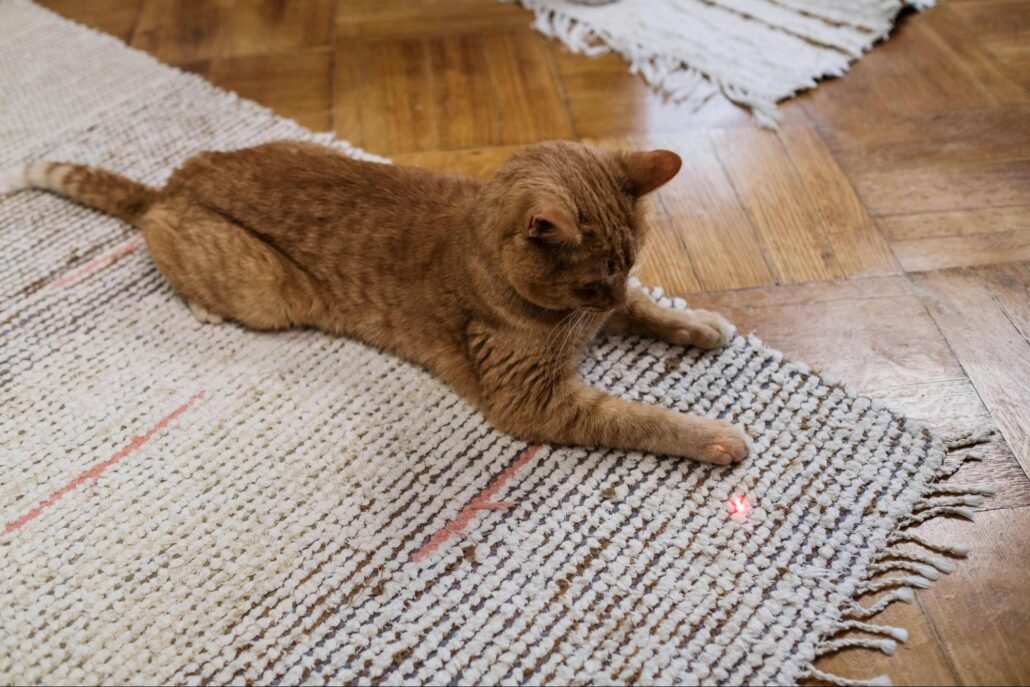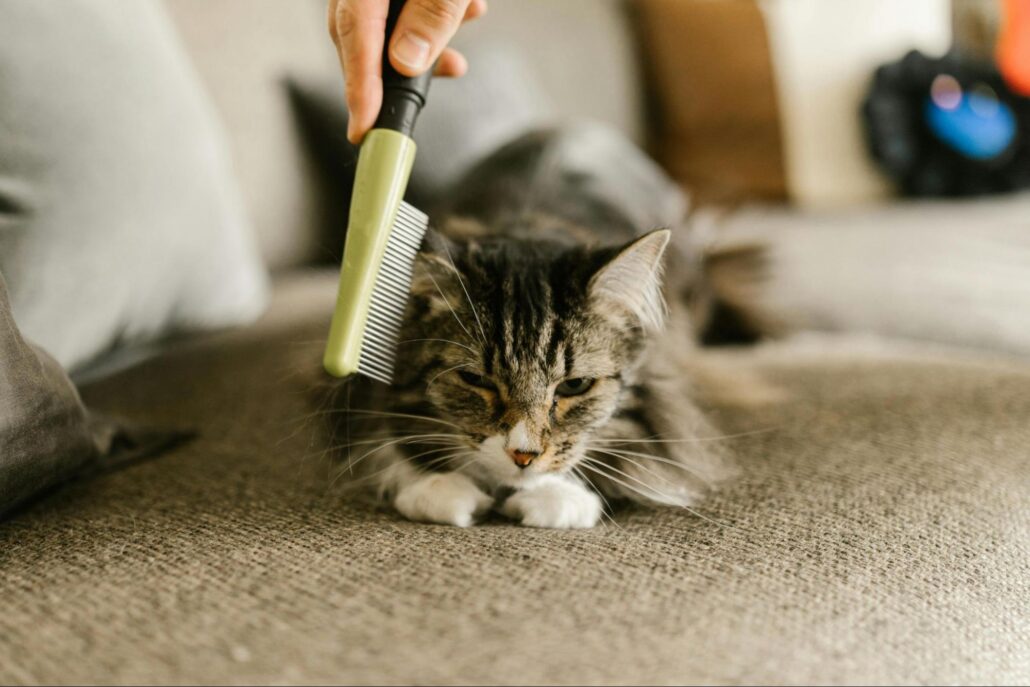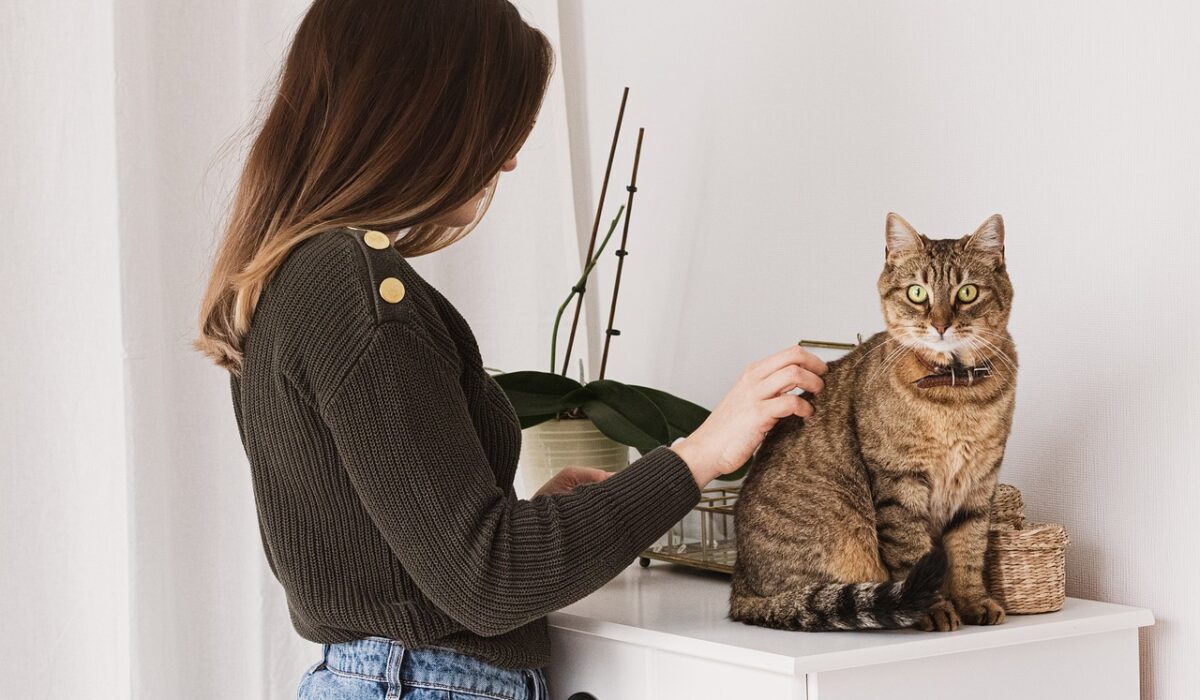8 Cat Grooming Secrets from Our Kitty Spaw Experts
Most felines are scaredy cats when it comes to anything involving water. But bathing your cat is as natural and necessary as bathing yourself, and it’s a crucial step in responsible pet ownership. If the thought of wrestling your Nervous Nellie into a tub of water frightens you, we’ve got you covered.
Our Certified Feline Master Groomers have years of experience and training, so they’re here to share eight expert tips they use in our spa every day. Make your life easier and give your cat a thorough clean without the trauma.
1. Tire Out Your Cat Before Grooming
Trying to lure your cat into a grooming situation is much like a game of, well, cat and mouse. They can toy with you for hours and carefully evade any well-planned schemes to capture them for cleaning. They have energy for days (or so it seems), but you can make them more compliant when you wear them out first.
So before bathtime, it’s playtime! Grab a laser pointer and play a few games of chase that will tire your cat quickly. Or find their favorite toy and have some bonding moments.
Exercise helps them get rid of excess energy, which can also reduce anxiety. Burning off this energy might also make them more receptive to being handled.

2. Limit Escape Routes
When cats feel trapped or threatened, they are more likely to become agitated and resistant. It’s up to you to create a secure space, one that keeps your dripping-wet feline in place while also reducing your own chance of injury.
Aim for a room that’s free from distractions or means of escape. A bathroom will work well if you’re grooming your cat at home. However, you might want to use a smaller tub or bucket instead of a large bathtub for better confinement.
3. Grab a Partner for Entertainment and Hands-On Help
Two heads are better than one, and this applies to cat grooming. It’s helpful to have a partner who can entertain the cat while the other handles the rinse-lather-repeat process. This can help to reduce stress for your furry feline, plus it gives you an extra set of hands if your kitty tries to escape.
Since you’ll need to keep a hand on your cat at all times, your extra partner can help retrieve things like soap, brushes, and other supplies while you work.

4. Keep the Water Running
Cats are easily startled by changes in their surroundings—like turning on the water. It’s a good idea to have the water already on when you enter the grooming area with your cat. Keep it running so you don’t have to let go of your cat when it’s time to rinse. Plus, it will always be at the right temperature to keep your kitty comfy.
5. Use Your Inside Voice
Cats can pick up on even the smallest shred of stress, fear, or scheming. A small change in your demeanor can send them running up the nearest tree, where they’ll camp for hours.
Once you begin the bathing process, keep calm and carry on. Speak softly and nicely to your kitty. They might not understand every word, but they can lean into your tone and cadence.
Even if a wild tail splashes a tidal wave of water or an accidental claw emerges to leave a mark, maintain your composure. Keeping the peace will make life better for both of you.

6. Don’t Forget to Check Their Ears
Washing your cat’s fur is just the start of cat grooming. Even if your cat is a meticulous groomer, the ears are often neglected. Make sure you also give their ears a little TLC.
When washing your cat, you can place cotton balls in their ears to prevent water and soap from draining into them. Water in the ears can lead to yeast growth. When you’re done with the initial bath, use an ear cleaner to wipe away dirt, wax, and buildup.
You can get a cat-specific ear cleaner from your vet. These are usually quick drying and astringent to clean away dirt and bacteria with ease. Avoid using swabs, as these can push debris deeper into the ear and potentially cause infection or harm.
7. Groom Early and Often
Your cat might fight tooth and nail during their first bath, leaving both of you scarred for life. But like anything else, bathing takes some getting used to. The more consistently you groom your cat, the better they handle it.
It’s best to start early in life, around at least three months of age. Kittens don’t regulate their body temperature as well as older cats, so trying to bathe them before they’re at least 45 days old could lead to hypothermia. From there, it’s recommended to bathe your cat every 4-6 weeks.

8. Brush Your Cat Weekly to Make Bathing Easier
Brushing is no substitute for bathing, but it can help make bathing easier. Aim to brush your cat once per week to remove excess hair. This can help control hairballs, identify skin issues, and prevent clogs in your tub or sink when it’s time for a real bath.
Get Help with Cat Grooming from Kitty Spaw
These tips can help make bathtime less of a battle, but if the struggle just isn’t worth it, Kitty Spaw can help. Our experts are Certified Feline Master Groomers who specialize in cat grooming and health, giving your feline the royal treatment with every visit. Contact us today to learn more or to schedule service.




